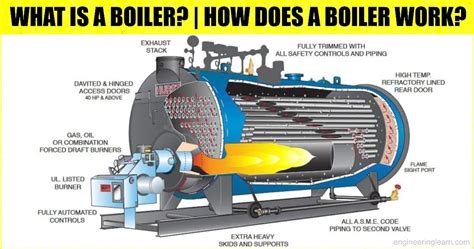How Does A Boiler Work Diagram
Ronan Farrow
Apr 04, 2025 · 3 min read

Table of Contents
How Does a Boiler Work? A Comprehensive Diagram and Explanation
Boilers are essential components in many heating systems, providing hot water or steam for various applications. Understanding how they function is crucial for maintenance, troubleshooting, and efficient energy use. This post will delve into the inner workings of a boiler, using diagrams and explanations to clarify the process.
The Boiler System: A Simplified Diagram
While the specifics vary depending on the boiler type (gas, oil, electric), the fundamental principles remain consistent. Imagine a simplified diagram:
+-----------------+
| FLUE GAS |-----> Chimney
+--------+--------+
|
| Heat Exchanger
|
+--------+--------+
| WATER |-----> Hot Water Outlets
+--------+--------+
|
| Pump
|
+--------+--------+
| COLD WATER |-----> Cold Water Inlet
+-----------------+
|
| FUEL (Gas/Oil/Electricity)
|
+-----------------+
| BURNER |
+-----------------+
This diagram shows the basic flow of water and energy. The core component is the heat exchanger, where the heat generated by the burner is transferred to the water. Let's break down each stage.
Stages of Boiler Operation: A Step-by-Step Guide
-
Fuel Supply and Combustion: The boiler starts with the fuel source (gas, oil, or electricity) feeding into the burner. The burner ignites the fuel, producing heat. The type of burner will influence efficiency and emissions.
-
Heat Transfer: This heat is then transferred to the water within the boiler via the heat exchanger. This is typically a series of tubes or a large surface area designed for optimal heat transfer. The efficiency of this process is key to the boiler's overall performance.
-
Water Circulation: A pump circulates the heated water throughout the system, delivering hot water to radiators, underfloor heating, or domestic hot water taps. The efficiency of the pump is also vital for the overall system efficiency. This continuous circulation ensures consistent hot water delivery.
-
Flue Gas Exhaust: The combustion process creates waste gases (flue gases). These are safely expelled through the chimney. Proper venting is critical to prevent dangerous gas buildup. The design of the flue and chimney directly impacts the boiler's efficiency and safety.
Different Boiler Types and Their Mechanisms
While the basic principle remains consistent, variations exist based on the fuel source:
-
Gas Boilers: These are popular for their efficiency and relatively low emissions (compared to oil). They use a gas burner to heat the water.
-
Oil Boilers: While less common now due to environmental concerns, oil boilers operate similarly to gas boilers, but with oil as the fuel source.
-
Electric Boilers: These use electrical resistance heating elements to heat the water. They are often smaller and quieter than gas or oil boilers, but electricity costs can be higher depending on location.
Optimizing Boiler Efficiency
Several factors contribute to optimal boiler performance and efficiency:
-
Regular Servicing: Annual servicing helps identify and address potential issues before they escalate, improving efficiency and extending lifespan.
-
Proper Ventilation: Adequate ventilation ensures efficient combustion and safe flue gas removal.
-
Water Treatment: In some systems, water treatment can help prevent scaling and corrosion, maximizing heat transfer efficiency.
-
Thermostat Settings: Programmable thermostats allow for optimized heating schedules, reducing energy waste.
Understanding how a boiler works empowers you to maintain, troubleshoot, and optimize your heating system for maximum efficiency and minimal environmental impact. Remember to consult with a qualified professional for any significant repairs or installations.
Featured Posts
Also read the following articles
| Article Title | Date |
|---|---|
| How Does Subject To Work | Apr 04, 2025 |
| How Fast Is 373 Km In Mph | Apr 04, 2025 |
| How Do You Preserve A Fish For Mounting | Apr 04, 2025 |
| How Fast Can You Drive In 4 High F250 | Apr 04, 2025 |
| How Do Tattoo Walk Ins Work | Apr 04, 2025 |
Latest Posts
-
How Long Does Divorce Take In Alabama
Apr 05, 2025
-
How Long Does Dinner Take At A Wedding
Apr 05, 2025
-
How Long Does Diamond Glow Last
Apr 05, 2025
-
How Long Does Dessert Wine Last
Apr 05, 2025
-
How Long Does Dental Sedation Last
Apr 05, 2025
Thank you for visiting our website which covers about How Does A Boiler Work Diagram . We hope the information provided has been useful to you. Feel free to contact us if you have any questions or need further assistance. See you next time and don't miss to bookmark.
